You will love this chicken estofado not only it’s easy to cook dish, the ingredients are also very simple and few. If you are tired of cooking chicken adobo, and want something with a little bit of Asian twist, I think this dish is a good substitute specially if you like dishes with a little bit of sweetness. You can cook this in any occasion or any ordinary day.
Chicken Estofado: A Nostalgic Aroma That Feels Like Home
There’s something special about the aroma of chicken estofado bubbling away in the kitchen. It always takes me back to the warm, lazy afternoons at my Lola Linda’s house in Pampanga. We’d often gather for a simple meal that, despite its humble ingredients, always felt like a grand celebration. For me, this is one of those dishes that blur the lines between everyday fare and special occasions.
My cousin, Lito, often joked that estofado was “adobo’s sweeter cousin.” He wasn’t wrong. If you’re looking for a dish that brings the familiar comfort of adobo but with a delightful twist of sweetness and warm spices, this dish is for you. This dish, with its balance of savory and sweet, is a favorite that has graced our family table countless times, usually accompanied by fluffy, steaming rice.
The Heart of Chicken Estofado: Sweet and Savory Balance
What makes this dish such a standout dish is the interplay of flavors. It’s that subtle sweetness that gives it a unique character, a taste my Tito Jun always said reminded him of the caramelized street snacks in Binondo. The brown sugar we use caramelizes gently, lending the sauce a deep, rich flavor that coats each piece of chicken beautifully. Paired with soy sauce and oyster sauce, the dish finds the perfect harmony of umami and sweetness.
Speaking of sweetness, this component is what makes estofado different from your everyday adobo. The sweetness cuts through the savory elements, giving a luscious depth to the sauce. It’s no wonder that, even after all these years, I still catch my siblings sneaking spoonfuls of sauce straight from the pan.
Why This Technique Works in Chicken Estofado?
One of the essential techniques in making the estofado is caramelizing the sugar properly. My Ninang Tess always reminded me that patience is key. When you caramelize sugar, you want to bring out its rich, molasses-like flavor without burning it. This step is crucial because it forms the backbone of the dish’s unique taste. Once the sugar turns a beautiful amber, we add the chicken, letting the meat soak up all that wonderful flavor as it cooks.
Sautéing the aromatics—garlic and onions—before adding the chicken is another step that builds a deeper flavor base. The garlic perfumes the oil, creating a savory start, while the onions melt into sweetness as they cook, complementing the sugar and balancing out the overall taste.
The Secret Ingredients: Star Anise and Bay Leaf
No chicken estofado would be complete without the aromatic magic of star anise and bay leaf. These two ingredients may seem simple, but they add layers of complexity to the dish. My Uncle Efren, who spent years working as a chef in Cebu, always told me that star anise is the soul of estofado. Its warm, licorice-like fragrance transforms the dish, making it stand out. Bay leaf, on the other hand, lends a subtle herbal note, cutting through the richness of the sauce.
Star anise may be small, but don’t underestimate its impact. It’s what makes this dish smell like a festive treat. When I was younger, I’d always wonder what that special scent was, and it wasn’t until years later that I realized it was the humble star anise doing its magic.
Making the Sauce Just Right
The key to a good chicken estofado sauce lies in its consistency. You want the sauce to be thick enough to cling to the chicken, but not too sticky. Simmering the chicken gently until the liquid reduces creates a beautifully glossy sauce. Just be careful not to rush this step or let the chicken stick to the bottom of the pan. Stirring occasionally ensures that the flavors are evenly distributed, and nothing burns.
My sister Mina once learned this the hard way when she left her estofado unattended. The sweet, savory aroma turned into a smoky mess. She called me in a panic, and we laughed about it later, realizing that even our mishaps had become stories worth remembering.
A Brief History of Estofado
Did you know that estofado traces its roots back to the Spanish influence on Filipino cuisine? The word “estofado” itself is derived from the Spanish word “estofar,” which means to stew or braise. This cooking method, brought by the Spanish colonizers, has since evolved to include the distinct flavors we Filipinos love. Our version is sweeter and spicier, incorporating local ingredients that make it uniquely our own.
Filipino dishes are often a reflection of our diverse cultural history, and this is no exception. It’s a dish that embodies how we’ve taken foreign flavors and made them undeniably Filipino.
Cooking It at Home
Now, making chicken estofado at home is a simple but rewarding experience. Start by heating oil in a wok, letting the garlic sizzle until fragrant, and then adding onions until they turn soft. When you add the chicken pieces, wait for them to brown slightly. This helps lock in the flavors. The addition of star anise and bay leaf comes next, followed by the brown sugar, soy sauce, oyster sauce, and just enough water to cover the chicken.
Simmer everything until the sauce thickens and clings to the chicken pieces. It’s a beautiful transformation that makes the entire kitchen smell like a comforting embrace. Before serving, a sprinkle of chopped green onions adds a fresh pop of color and flavor.
A Dish Worth Sharing
Chicken estofado is more than just a recipe; it’s a shared experience. It’s the laughter of family gathered around the table, the playful banter, and the warm memories that each spoonful brings. So the next time you’re craving something hearty and full of flavor, remember this dish and the stories behind it. After all, every bite of iconic dish is a taste of home, and who wouldn’t want that?
How To Make Chicken Estofado (Estofadong Manok)
Ingredients
- 1 kilo chicken cut into serving pieces
- 1/8 cup soy sauce
- 1/8 cup oyster sauce or Hoisin sauce
- 2 to 3 Tbsp. brown sugar or muscovado sugar
- 1 Tbsp. minced garlic
- 2 pieces star anise whole
- 1 tsp. ground pepper
- 2 pieces red onion chopped
- 1 piece bay leaf or laurel leaf
- 1 & 1/2 cup water
- 3 Tbsp. cooking oil
Instructions
How To Make Chicken Estofado:
- In a medium size non-stick wok or carajay heat cooking oil and saute garlic until fragrant.
- Add in the onions and saute until tender. Then add the chicken pieces and stir cook until the chicken turns light brown.
- Put in the star anise, bay leaf, brown sugar, pepper, soy sauce, oyster sauce and water.
- Simmer the chicken until cooked and almost of the liquid has evaporated and the sauce is thick.
- Be careful not to burn the chicken by stirring it constantly.
- Turn off heat and serve hot. You can also garnish it with chopped green onion.
Video
Notes
Cooking Tips:
- Marinate for Enhanced Flavor: Before cooking, marinate the chicken pieces in a mixture of soy sauce, brown sugar, and your preferred spices for at least 30 minutes to allow the flavors to infuse the meat, resulting in a more delicious and flavorful estofado.
- Simmer Slowly on Low Heat: To achieve tender and succulent chicken, simmer the dish slowly on low heat rather than rushing the cooking process. This allows the chicken to absorb the rich flavors of the sauce and ensures that the glaze thickens to perfection.
- Adjust Sweetness to Taste: While the traditional recipe calls for a balance of sweet and savory flavors, feel free to adjust the amount of brown sugar to suit your taste preferences. Add more or less sugar to achieve the perfect level of sweetness that pleases your palate.
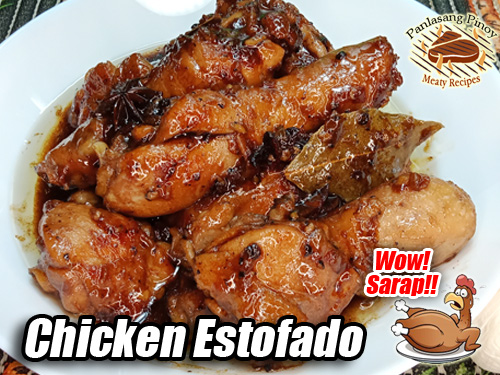

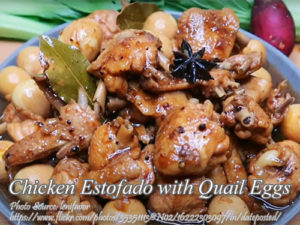
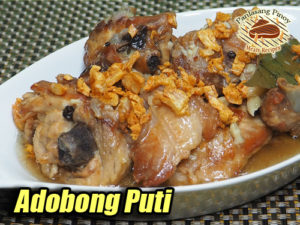
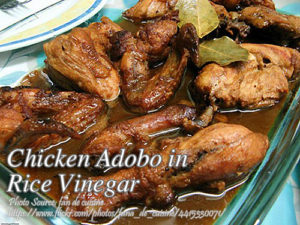
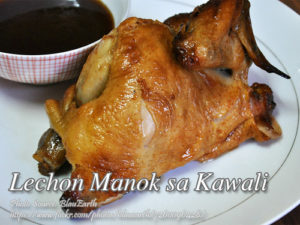
Your chicken estofado looks delicious! I try to cook this for dinner tomorrow. Thanks!
Hi Aiza, good luck on your cooking and I hope it turns out well!